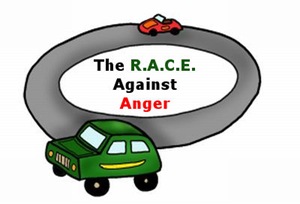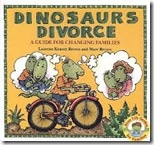How Can I Deal With All This Anger?

 Anger is a very common reaction in children whose parents have separated or divorced. When you do not deal with your anger, it can become very destructive, and when you let it out in the wrong way, you can hurt yourself or someone else or find yourself in trouble. In the past, you may have had people tell you that you need to slow down and pause when you get angry. That’s probably good advice, but today we are going to look at a way to deal with anger that involves speeding up. When you get angry remember to win the RACE against anger with this four step plan:
Anger is a very common reaction in children whose parents have separated or divorced. When you do not deal with your anger, it can become very destructive, and when you let it out in the wrong way, you can hurt yourself or someone else or find yourself in trouble. In the past, you may have had people tell you that you need to slow down and pause when you get angry. That’s probably good advice, but today we are going to look at a way to deal with anger that involves speeding up. When you get angry remember to win the RACE against anger with this four step plan:
STEP #1: RECONGNIZE YOUR ANGER
The first step in addressing your anger is to recognize when you are angry. Pay attention to what your body feel like when you get angry. Do your shoulders tense up? What does your face look like when you’re angry? How do you feel deep in your stomach when you’re angry? You might want to use the anger page from our My Feelings Workbook to help you understand how your body reacts to anger. Other things you will want to keep track are the things that make you angry and how angry you get. You can use the Anger-ometer to keep track of this for a week to note patterns in your anger. By understanding your anger, you will be in a better position to deal with it.
STEP #2: ADDRESS YOUR ANGER
It is important that you address any anger that you may be feeling. It is easy to just write off your anger or to bury it deep inside. Both of these options will lead to long term problems. Anger which is not dealt with will only fester and grow until it eventually comes out. Anger buried deep inside and not dealt with is like a volcano just waiting to erupt.
STEP #3: CONTROL YOUR ANGER
It is important that you control your anger and not allow your anger to control you. An important part of controlling your anger is to express it in constructive ways. You can’t just keep it all inside, but you need to find constructive ways to let it out. Here are come suggestions, but you will need to figure out what works for you:
- Listen to music
- Ride a bike
- Take a walk
- Play with a pet
- Engage in a sport
- Swim
- Breathe deeply
- Count to ten
- Draw a picture
- Talk to someone about it
- Sing loudly
- Dance
- Play with clay or play-doh
- Volunteer your time
STEP #4: EXPLORE YOUR ANGER
Many times anger is actually an expression of something else we may be feeling. Once your anger is under control and has been expressed constructively, take some time to figure out what is really making you angry. Anger can grow out of fear, anxiety, sadness, guilt, embarrassment, insecurity or various other emotions. If you want to deal with your anger for the long term, you’ll need to figure out what underlying emotion is causing you to be angry. Spend some time thinking about it and exploring the source of your anger.





It’s so nice to see you on Linkedin and to read your post. Children of divorce need tools to deal with their emotions and this is a great post. If you would like me to be a guest blogger and to write about loyalty conflicts or “The Sleeper Effect” I would love to do so. Or you can post my Huffington Post article with my permission. Regards, Terry Gaspard MSW, LICSW
Check out my article on Divided Loyalties on my website movingpastdivorce.com
http://movingpastdivorce.com/2013/03/divided-loyalties-the-unintended-plight-of-children-of-divorce/
You can find my Huffington Post article “The Sleeper Effect” here:
http://www.huffingtonpost.com/terry-gaspard-msw-licsw/the-sleeper-effect_b_2194798.html